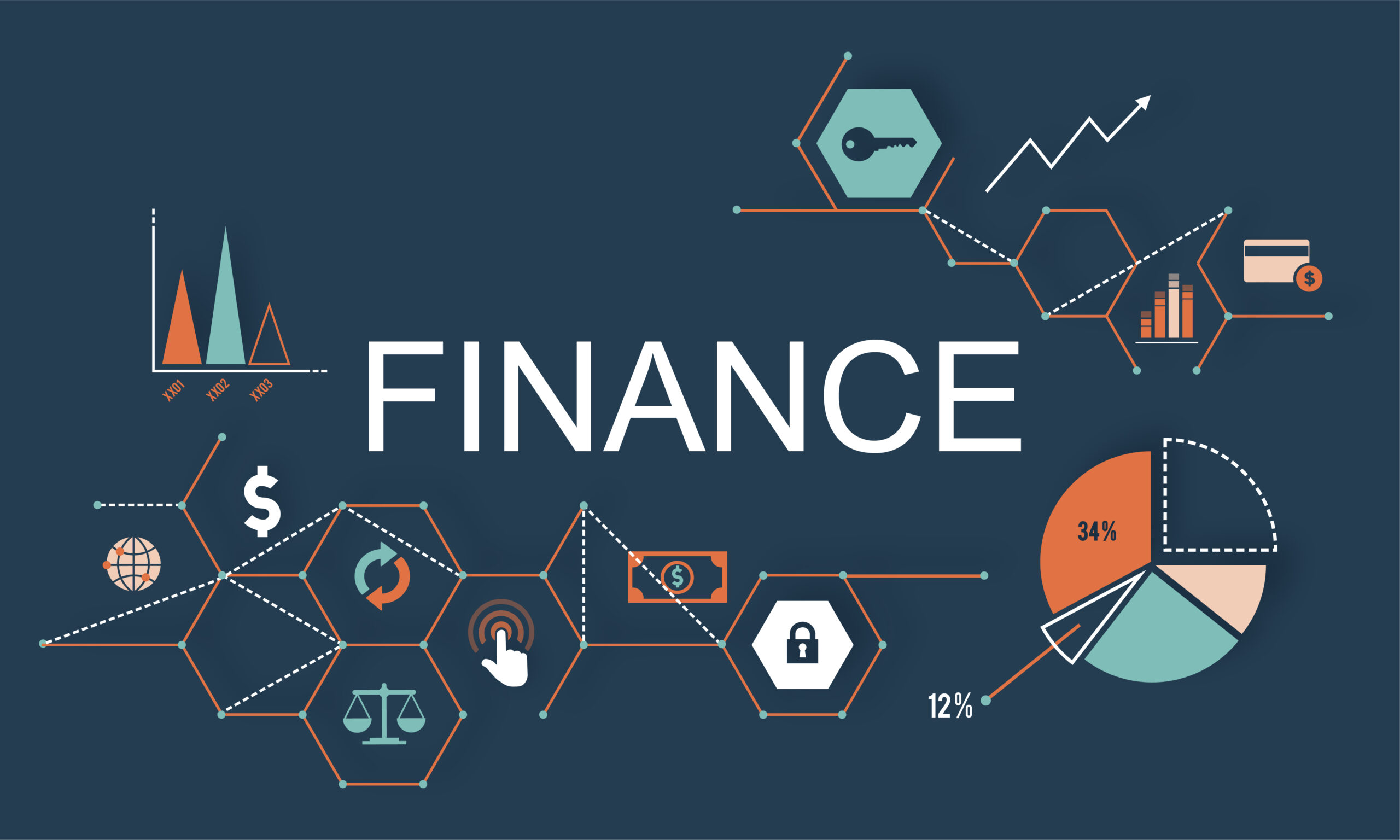
How Mobile App Development Enhances Customer Retention in the Financial Sector
In the ever-changing financial world, customer retention has emerged as a top priority for institutions. As competition heats up and consumer expectations alter, financial institutions must stay ahead by using innovative technologies that promote long-term connections with customers. Mobile app development has emerged as one of the most efficient strategies to increase customer retention in the finance industry. Financial apps may increase consumer engagement and loyalty by providing personalized, secure, and easy-to-access services.
Introduction
The Importance of Customer Retention in the Financial Sector
Customer retention is critical to the growth and viability of financial organizations. With the rise of fintech and digital banking, maintaining current customers has become more difficult than ever. A satisfied consumer not only brings in repeat business, but also helps to attract new customers via word-of-mouth referrals. As the banking sector digitizes, having an effective strategy for preserving customer loyalty becomes increasingly important. One such method is to invest in mobile app development, which provides a variety of capabilities for increasing consumer engagement and retention.
Why Mobile Apps Matter for Customer Retention
Mobile apps are becoming increasingly important in financial services because they enable organizations to provide services at any time and from any location. Customers are increasingly using their cellphones for regular banking operations, such as transferring payments and tracking costs. This level of accessibility increases client satisfaction, but the additional features and capabilities genuinely raise the user experience. Financial institutions may improve customer retention rates by offering services like rapid notifications, frictionless transactions, and personalized financial tools.
Key Benefits of Mobile App Development for Financial Institutions
How Apps Improve Engagement and Retention Rates
Mobile apps offer a direct and consistent means of communication between financial institutions and their consumers. These apps boost user engagement, which is important for client retention, by providing easy access to services. Furthermore, financial applications gather significant data on user behavior, allowing institutions to fine-tune their services and provide personalized experiences. This data-driven strategy increases client happiness, which leads to improved retention rates.
Personalized User Experience
One of the most significant aspects of mobile app development is the potential to offer a personalized experience. Financial institutions can customize app features depending on consumer preferences, previous transactions, and behavioral data. This customization might involve providing personalized savings objectives, financial advice, and even targeted product promotions. When clients believe their financial institution understands their needs and provides relevant services, they are more likely to remain loyal and engaged. Partnering with a custom mobile app development company ensures that the app is tailored to meet the specific needs of the financial institution and its customers, enhancing the overall user experience.
Real-Time Notifications and Updates
Another method mobile apps might assist increase client retention is by keeping them informed in real time. Customers, for example, can receive real-time notifications regarding their account balances, transactions, due payments, and even changes in interest rates. These real-time notifications encourage customers to stay engaged to their accounts, boosting the possibility that they would use the app again for future transactions.
Enhancing Trust and Security through Mobile Apps
The Role of Secure Transactions in Customer Retention
Security is critical in the financial sector, and clients expect their mobile banking experiences to be secure and reliable. Financial apps that prioritize security measures build confidence among users. When clients feel safe while using an app, they are more likely to trust the organization with their sensitive financial information. This trust is critical to long-term consumer retention.
Mobile App Security Features
Mobile apps for financial organizations frequently include complex security methods like two-factor authentication, encryption, and biometric login (fingerprint or face recognition). These safeguards protect users’ personal and financial information from unauthorized access, making them feel comfortable using the app. As the financial sector continues to face cyber threats, keeping a high level of security is critical to client loyalty.
Seamless Integration with Financial Services
Improving Accessibility to Services through Apps
Mobile apps allow clients to access a variety of financial services with a few taps on their cellphones. Financial applications provide convenient access to vital services, such as checking account balances, paying payments, and applying for loans, without the need to visit a bank location. This convenience is an important aspect in keeping customers engaged and maintaining them in the long run.
Mobile Banking and Financial Apps
Mobile banking is one of the most popular uses of mobile apps in the financial industry. Financial institutions can meet the demands of their consumers without requiring actual visits by providing a user-friendly platform for banking services. Users can conduct transactions, examine financial statements, transfer payments, and even apply for credit using their smartphones. This level of convenience improves the consumer experience, increases loyalty, and reduces turnover.
Integration with Other Financial Tools
Mobile apps can work with other financial tools including budgeting apps, investment trackers, and financial planning services. This integration establishes a full financial ecosystem upon which customers may rely. Financial organizations boost the likelihood of customer retention by allowing them to manage all of their financial activities from a single app.
Customer Engagement Strategies via Mobile Apps
Building Stronger Relationships with Customers
Mobile apps enable financial organizations to engage their clients in significant ways. Offering personalized information, appropriate product recommendations, and bespoke financial advice contributes to a closer link between customers and the institution. Over time, this results in enhanced client loyalty and retention.
Loyalty Programs and Rewards
Loyalty schemes and awards might encourage people to keep using the app and financial services. Customers, for example, may earn points for each purchase or receive discounts on financial items such as loans or insurance. Financial organizations can improve client satisfaction and retention by rewarding their loyal consumers.
Interactive Features for Better Customer Interaction
Incorporating interactive features into financial apps, such as chatbots and feedback mechanisms, encourages clients to use them on a frequent basis. Chatbots can immediately answer frequent queries and address issues, whilst feedback forms allow customers to participate in the app’s development. These interactive features help keep users interested, lowering the risk that they will exit the app.
Data-Driven Insights for Improving Retention
Behavioral Data and Predictive Analysis
Mobile apps capture massive amounts of data, such as customer behavior, preferences, and purchasing habits. By analyzing this data, financial institutions may forecast future behavior and develop tailored efforts to keep clients engaged. For example, if a consumer frequently checks their savings account balance, the app may recommend new savings options based on their habits, improving their overall experience and encouraging long-term use.
Enhancing Customer Experience through App Metrics
App metrics, such as user retention rates, session time, and feature usage, provide useful information about how users interact with the app. Financial institutions can use this information to identify pain points, optimize user flows, and enhance the overall experience. This continual improvement method increases client loyalty and retention.
Overcoming Challenges in Mobile App Development
Cost and Resource Allocation
Creating and maintaining a financial mobile app can be costly, particularly for smaller institutions. It is critical for financial institutions to spend resources properly and prioritize key features that will have the biggest impact on client loyalty. Institutions can maximize their app development returns by focussing on user-centric design, security, and seamless connection with services.
Regulatory Compliance and Data Privacy
Financial apps must comply with a variety of standards, including data protection legislation like GDPR and PCI-DSS. Ensuring that apps fulfill these requirements can be difficult, but it is critical for retaining user trust and avoiding legal complications. Financial institutions must spend on legal advice and security steps to ensure that their apps follow industry rules.
Future Trends in Mobile App Development for Financial Institutions
Innovations Shaping the Future of Customer Retention
The future of mobile app development in the banking sector looks bright, as innovative technologies continue to improve customer retention. From artificial intelligence (AI) to blockchain, the next generation of banking apps will provide even more ways to build consumer loyalty.
AI and Machine Learning in Mobile Apps
Artificial intelligence and machine learning are predicted to have a big impact on the future of mobile apps. These technologies can be used to further personalize user experiences by providing real-time financial advice and suggestions based on user behavior and preferences.
Blockchain and Cryptocurrencies
Blockchain technology and cryptocurrencies are gaining acceptance in the financial sector, with mobile apps at the forefront of this trend. Financial organizations may improve security and transparency by integrating blockchain into mobile apps, hence increasing consumer trust and retention.
Conclusion
In conclusion, mobile app development is transforming how financial institutions engage with and retain customers. Through personalized experiences, secure transactions, and seamless integration with services, mobile apps offer a range of tools to improve customer retention in the financial sector. As technology continues to evolve, financial apps will play an increasingly important role in fostering long-term customer relationships, helping institutions stay competitive in a rapidly changing market.
FAQs
- How do mobile apps improve customer retention in the financial sector?
Mobile apps offer easy access to services, personalized experiences, and real-time notifications, all of which increase consumer engagement and retention. - Are financial apps secure?
Yes, banking apps prioritize security by including features like two-factor authentication, encryption, and biometric login to safeguard clients’ information. - Can mobile apps integrate with other financial tools?
Yes, financial apps can integrate with budgeting, investment, and planning tools to create a comprehensive financial ecosystem. - How do AI and machine learning enhance mobile apps in the financial sector?
AI and machine learning can provide personalized recommendations, predict customer behavior, and offer real-time financial advice. - What are some common challenges in mobile app development for financial institutions?
Challenges include costs, resource allocation, regulatory compliance, and ensuring robust data privacy and security measures.



